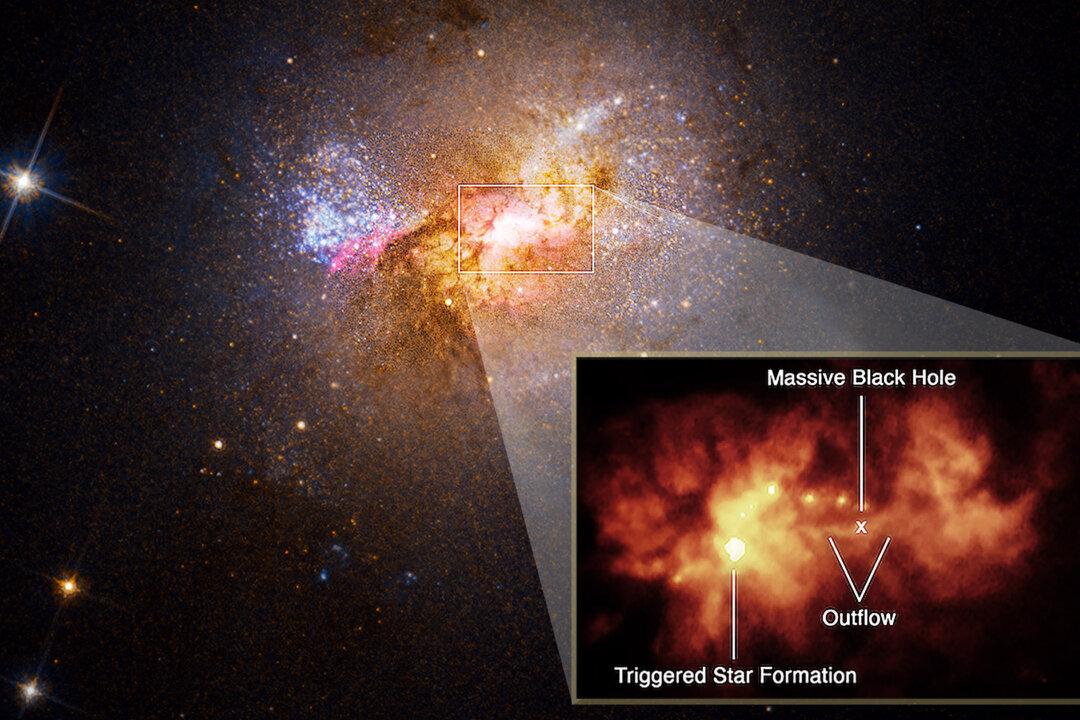Black holes—like monstrous, cosmic super villains—habitually wreak havoc in space, tearing stars to pieces, consuming anything that comes too close, even preventing light from escaping their clutches. The role black holes play on the universal stage is mostly a destructive one.
But foiling this villainous depiction, researchers recently discovered a cluster of newly forming stars in dwarf galaxy Henize 2-10—stars whose birth was fostered, not thwarted, by the outflow of a relatively small black hole (yes, black holes have particle jet outflows above and below their massive “disks”) that previously laid undetected.






